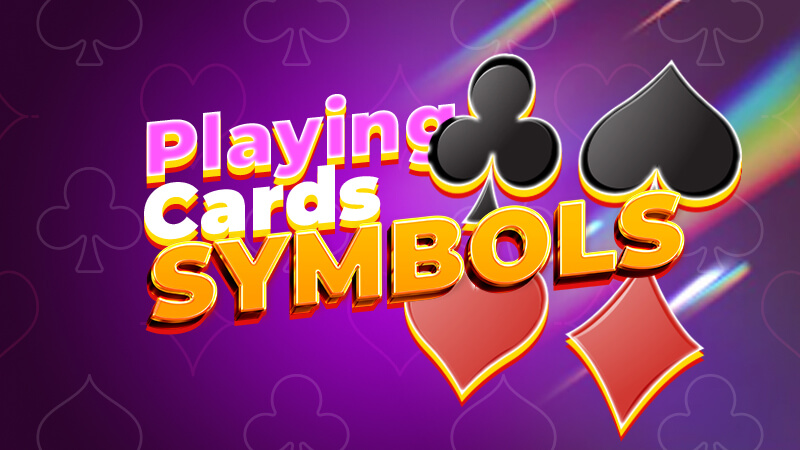In this article, we embark on a journey to uncover the profound meaning behind the symbols that adorn playing cards. As we delve deeper into the rich tapestry of playing card symbolism, we will unveil the layers of interpretation that have enriched our understanding of these seemingly simple yet enigmatic objects.
1. The Symbolism of the Four Card Suits
Beyond their role in card games, the four suits – Hearts, Diamonds, Clubs, and Spades, have often been used to represent different social classes and facets of society.
Hearts: The Clergy
Hearts, with their symbolic link to love and emotion, can be seen as representing the clergy. The spiritual leaders of society, such as priests and religious figures, are often associated with hearts as they guide and nurture the emotional and moral well-being of their communities. The clergy’s role is to offer solace, compassion, and love, just as the hearts symbolize affection, kindness, and empathy in the context of playing cards.
Diamonds: The Aristocracy
Diamonds, often associated with wealth, luxury, and opulence, aptly represent the aristocracy in this interpretation. Throughout history, the aristocracy has been characterized by its affluence, privilege, and access to the finer things in life, much like the symbolism of diamonds. Members of the aristocracy have historically held positions of power and control over vast resources. Diamonds, with their brilliance and rarity, mirror the sense of exclusivity and prestige associated with aristocratic circles.
Clubs: The Peasantry
Clubs, resembling the simple shape of a plant’s stem or a farmer’s tool, can be interpreted as a symbol of the peasantry. Historically, the peasantry constituted the working class, the backbone of society responsible for agriculture, manual labor, and sustenance. Clubs, with their unadorned and unpretentious appearance, reflect the toil and labor undertaken by the common people.
Spades: The Military
Spades, often associated with the symbol of a sword, or an arrowhead, embody the military in this interpretation. Throughout history, the military has been characterized by its role in conflict, defense, and the exercise of power, much like the symbolism of the spades. The spade’s sharp edges and pointed shape resemble a weapon, symbolizing the military’s readiness for combat and defense.
2. Numerical playing cards symbols
Every deck has 52 cards, the same as the number of weeks in a year. Each of the four suits consists of 13 cards, aligning symbolically with the 13 lunar months within a year. Also, when you sum up the numerical values of all the cards in the deck, including the enigmatic joker, the total amounts to 365, the exact count of days in a year.
Each card value within the deck, in addition to its numerical significance, is also associated with a keyword that captures the essence and personality of the respective card suit symbol:
- Ace – Desire
- 2 – Union
- 3 – Faith
- 4- Satisfaction
- 5 – Change
- 6 – Adjustments
- 7 – Victory
- 8 – Power
- 9 – New beginnings
- 10 – Success
3. The Court Cards: Kings, Queens, and Jacks
The Kings, Queens, and Jacks in a standard deck are often referred to as the “court cards”. Kings represent authority, leadership, and mastery of their respective suits. Queens exude grace and wisdom. Jacks embody enthusiasm and a willingness to take risks. However, each one is also representative of historical and fictional figures:
Kings
- King of Spades: King David. The King of Spades is emblematic of King David, the renowned monarch of Israel during the 10th and 11th centuries BCE, famed for his fearless triumph over the giant Goliath with a single, skillful stone.
- King of Hearts: King Charlemagne. The King of Hearts pays homage to King Charlemagne (Charles the 1st), who reigned as the King of the Franks from 768 CE and later ascended as the King of Italy and Holy Roman Emperor from 774 CE. Often hailed as the “Father of Europe” and dubbed “Charles the Great,” Charlemagne’s vast empire unified much of Western Europe, akin to the days of the Roman Empire’s glory.
- King of Diamonds: Julius Ceaser. The King of Diamonds card evokes the memory of Julius Caesar, the formidable General, Consul, and dictator of the Roman Republic during the 1st century BCE. His legacy extended not only through his military conquests but also through the naming of the month of July in his honor.
- King of Clubs: Alexander the Great. The King of Clubs commemorates the unmatched military prowess and charisma of Alexander the Great, the ruler of Macedonia in the 4th century BCE. At the remarkable age of 30, Alexander had established one of the most expansive empires in ancient history, stretching from the Ionian Sea to the Himalayas.
Queens
- Queen of Spades: Pallas Athena. The Queen of Spades invokes the spirit of Pallas Athena from Greek mythology. Athena, the goddess of wisdom, courage, mathematics, civilization, and many other facets, remains an enduring symbol of inspiration and enlightenment. Although she never existed in the flesh, Athena’s influence can be seen in monuments, literary works, and the city of Athens, serving as a testament to her profound impact.
- Queen of Hearts: Judith. The Queen of Hearts pays tribute to the heroine Judith, a figure from the Eastern Orthodox Bible’s Old Testament. Her story revolves around a daring and beautiful Jewish widow who liberates the Israeli people from the oppressive yoke of General Holofernes and the Assyrians, leaving an indelible mark on religious folklore and heroism.
- Queen of Diamonds: Rachel. The Queen of Diamonds takes us back to biblical times once more with Rachel, the mother of Benjamin and the famed Joseph. Her legacy is intertwined with the narrative of Israel’s tribes’ exile from Egypt, making her a vital part of the biblical tapestry.
- Queen of Clubs: Argea. The Queen of Clubs is personified by Lady Argea, the mother of the skilled shipbuilder Argus. She played a pivotal role in the epic tale of Jason and the Argonauts, who embarked on a legendary voyage aboard the ship Argo.
Jacks
- Jack of Spades: Ogier the Dane. Ogier the Dane is a prominent character from the 8th century CE. As the son of the King of Denmark, Ogier played a vital role in the battles against the Saracens, famously slaying the formidable giant Brehus.
- Jack of Hearts: La Hire. Étienne de Vignolles, called La Hire, was a revered French military commander during the tumultuous era of the Hundred Years’ War. He was a close confidant of Joan of Arc, the legendary heroine. La Hire, unlike many others, believed in Joan’s mission and stood by her side at the pivotal Battle of Orleans, contributing to the eventual success of her cause.
- Jack of Diamonds: Hector. The Jack of Diamonds brings forth the image of Hector, the valiant Trojan prince and the foremost defender of Troy during the epic Trojan War. As the leader of the Trojans and their allies, Hector displayed unparalleled martial prowess, slaying a staggering 31,000 Greek warriors in the course of the war, and earning a reputation as one of the greatest fighters of his time.
- Jack of Clubs: Sir Lancelot. Sir Lancelot is a central figure in the legendary tales of King Arthur and the Knights of the Round Table. Lancelot was not only King Arthur’s most trusted knight but also a key contributor to many of Arthur’s victorious endeavors. His complex character is most famously associated with his love affair with Guinevere, King Arthur’s wife, and his quest for the Holy Grail.
Why these figures? They’re the ones most commonly attributed since France’s 16th-century takeover of the playing card. The names behind face cards may differ between eras and regions, sometimes featuring Joan of Arc or the goddess of love and beauty, Venus.


